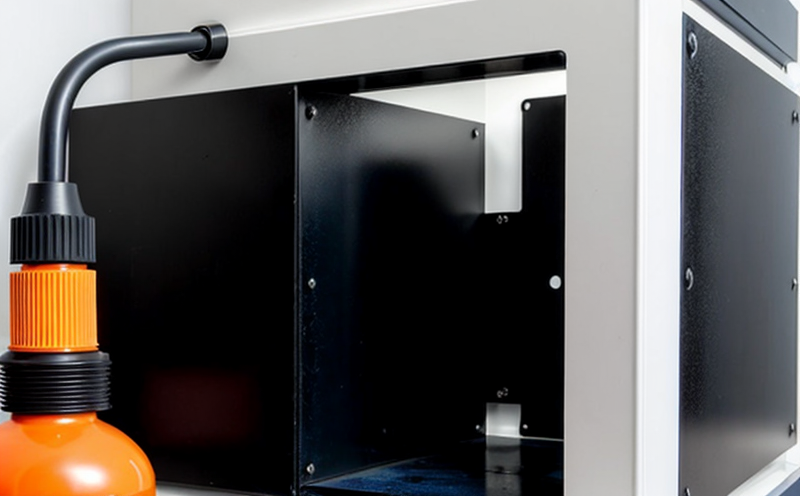EN 13523 7 Resistance to Cracking on Bending of Coatings
The EN 13523 series is a set of standards for the testing and evaluation of coatings, including their resistance to cracking under various conditions. Part 7 specifically deals with Resistance to Cracking on Bending of Coatings. This test evaluates the ability of a coating applied to a substrate to resist cracking when subjected to bending forces.
This is particularly important in sectors such as automotive, aerospace, and construction where coatings are used not only for their aesthetic appeal but also for their protection against environmental factors like UV radiation, moisture, and mechanical stress. The test helps manufacturers ensure that the coating adheres well enough to the substrate so that it does not crack or peel under typical usage conditions.
The bending test is a crucial part of quality control in the production process of coatings used across various industries where surface treatments are essential for durability and performance. By ensuring compliance with this standard, companies can demonstrate their commitment to producing high-quality products that meet regulatory requirements and customer expectations.
During testing, specimens are prepared according to specific dimensions outlined in the EN 13523-7 standard. The coating is applied to a substrate (typically steel or aluminum), dried, and allowed to cure fully before undergoing the bending test. Specimens undergo two-point bending at specified speeds until cracking occurs. The crack length and location are recorded, along with other relevant parameters such as temperature during testing.
The results of this test provide critical insights into the mechanical properties of coatings, particularly their adhesion strength and flexibility. They can also help identify potential areas for improvement in formulation or application methods that could lead to better performing products.
Understanding these nuances is essential for R&D engineers who are continually refining formulas and processes while maintaining consistency across batches. Compliance officers will find value in knowing how closely their manufacturing processes adhere to industry standards like EN 13523-7, ensuring they meet regulatory requirements both domestically and internationally.
For quality managers responsible for overseeing production lines, having data from this test can help them make informed decisions about process improvements aimed at enhancing product performance. Additionally, procurement teams may use information obtained through this testing to select suppliers whose products consistently meet stringent quality criteria.
Scope and Methodology
| Test Parameter | Description |
|---|---|
| Specimen Preparation | The specimen should be cut from the coated substrate according to specified dimensions. The coating thickness must be consistent throughout the sample. |
| Bending Speed | Test specimens are subjected to two-point bending at a rate of 1 mm/min until cracking occurs. |
| Temperature Control | The temperature during testing should be maintained within ±2°C of the specified value (usually room temperature). |
| Data Recording | All relevant data, including crack length and location, are meticulously recorded for analysis. |
This standardized procedure ensures consistency across different laboratories conducting similar tests. It also allows for accurate comparison of results from various batches or suppliers, which is vital in maintaining quality control standards throughout the supply chain.
The methodology described aligns closely with international standards like ISO and ASTM, ensuring that the testing process adheres to best practices recognized globally within relevant industries.
Benefits
Compliance with EN 13523-7 offers numerous benefits for manufacturers working in sectors reliant on protective coatings:
- Enhanced Product Quality: Ensures that the coating applied to substrates remains intact even under extreme conditions, enhancing overall product durability.
- Regulatory Compliance: Demonstrating adherence to recognized international standards helps build credibility and trust with regulatory bodies and customers alike.
- Informed Decision Making: Provides valuable data that can guide improvements in coating formulations or application techniques.
- Predictable Performance: Consistent results across different batches or suppliers allow for more predictable performance of the final product.
Beyond just meeting regulatory requirements, compliance with EN 13523-7 also sets a benchmark for excellence in quality assurance. It enables companies to offer products that not only meet but exceed customer expectations, thereby gaining competitive advantage in highly regulated markets.
Customer Impact and Satisfaction
The importance of EN 13523-7 cannot be overstated for customers seeking reliable performance from their suppliers. For instance, automotive manufacturers rely heavily on protective coatings to safeguard against environmental elements that could otherwise compromise vehicle integrity over time.
By ensuring that the coating applied meets strict standards like those set out in EN 13523-7, these manufacturers can provide vehicles with longer lifespans and better overall performance. Similarly, construction companies benefit from coatings that withstand harsh weather conditions without cracking or peeling off surfaces.
In both cases, compliance contributes directly to customer satisfaction by delivering products that consistently perform as expected. This consistency builds long-term relationships based on trust and reliability—a key factor in maintaining competitive advantage within these industries.





